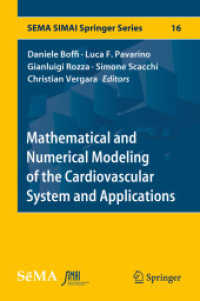- ホーム
- > 洋書
- > 英文書
- > Nature / Ecology
Full Description
while small millets are composed of six species that includes finger millet (Eleusine coracana (L.)), little millet (Panicum sumatrense), kodo millet (Paspalum scrobiculatum (L.)), foxtail millet (Setaria italica (L.)), barnyard millet (Echinochloa frumentacea (L.)), and proso millet (Panicum miliaceum (L.).








